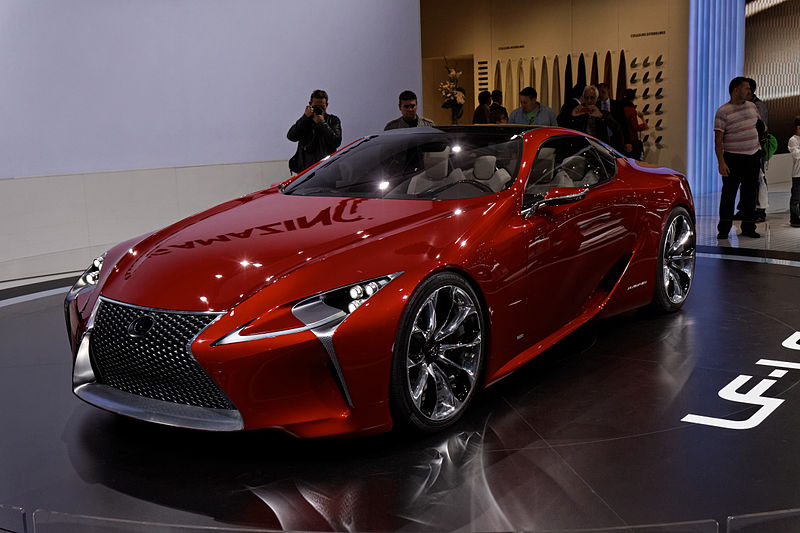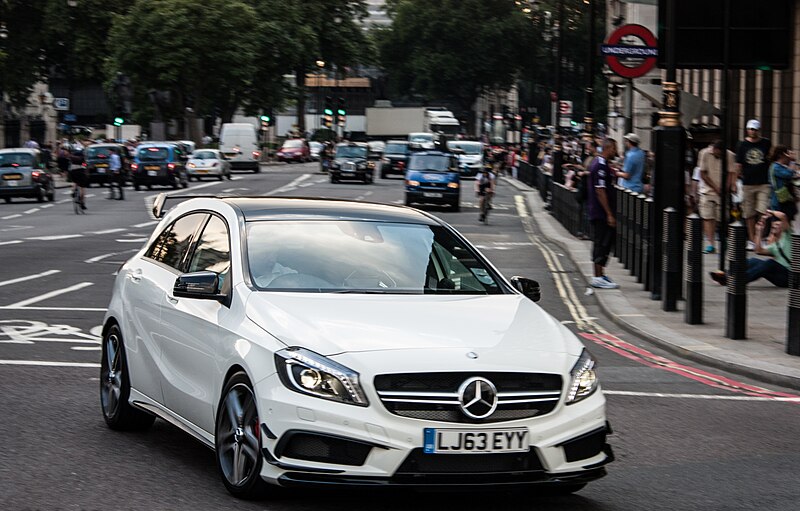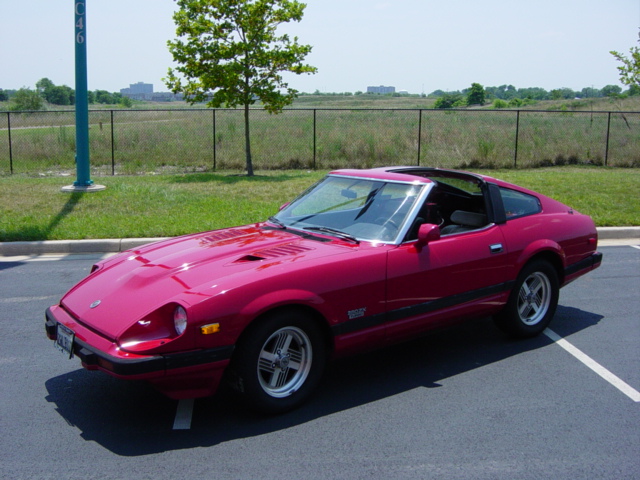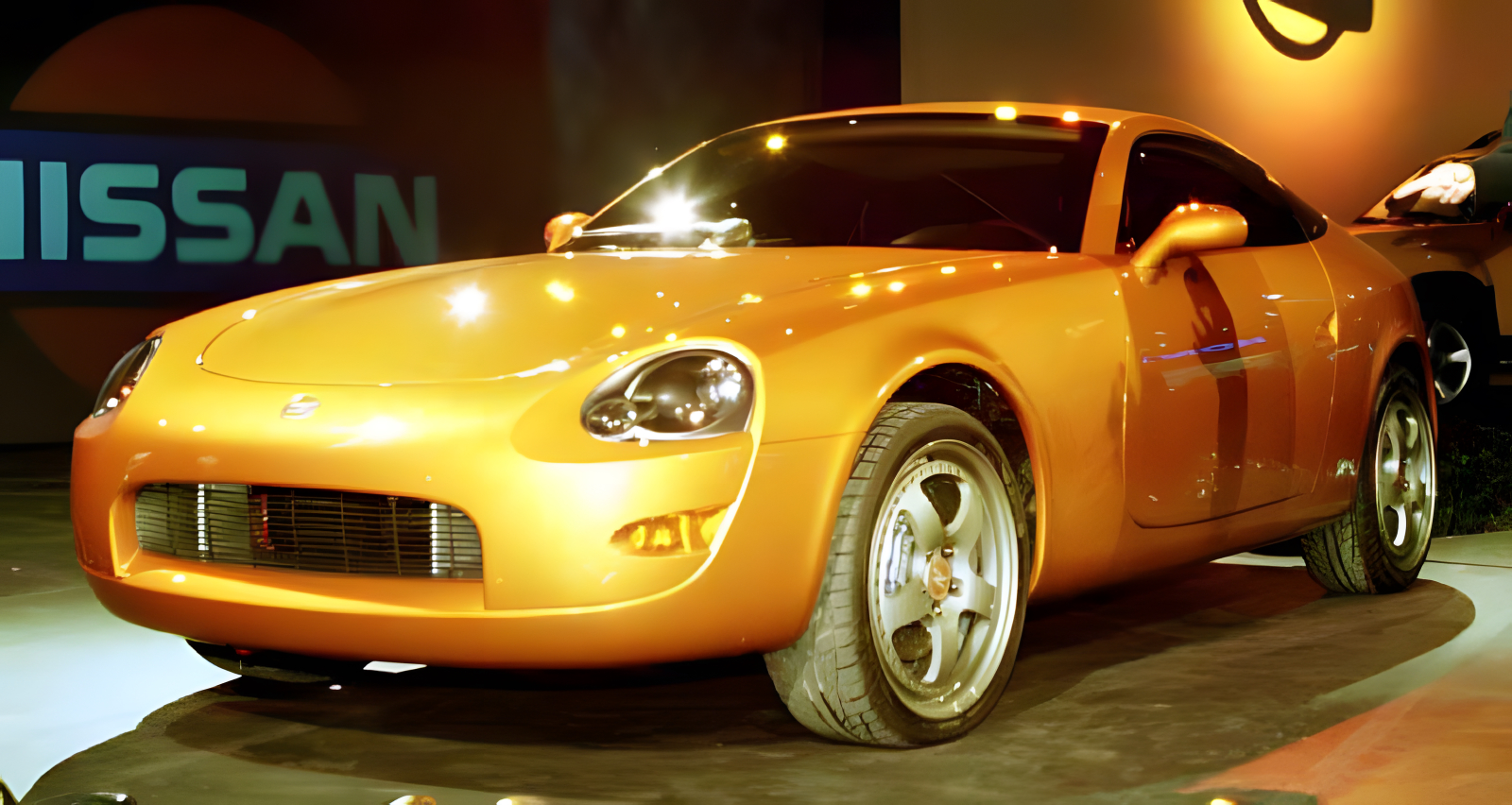 |
| Source: Kickaffe via Wikimedia Commons CC BY-SA 4.0
The battle for high efficiency, low emission engine continues to gather momentum when Mazda made a revolutionary announcement earlier this month in the form of the SkyActiv-X engine technology, which Mazda predicts will find its way into production cars by 2019. What the heck is that? Another one of Mazda's trick techno wizardry? In no uncertain term, it is one heck of a piece of tech. It is Mazda's speak for Homogenous Charge Compression Ignition (HCCI) engine, which mixes air and fuel in the cylinder like a gasoline engine, but ignite by piston compression like a diesel engine.
That sounds like a win-win proposition-diesel efficiency combines with clean gasoline emission. Except with a but. A BIG but. There has never been a production HCCI engine in mainstream cars. Why? Well, it's due to this conundrum: timing. Unlike on conventional gasoline and diesel engine where ignition timing can be easily controlled and adjusted with the spark plug (gasoline) and fuel injector (diesel), HCCI has no such luxury. It relies solely on cylinder temperature which if not controlled properly, can create a whole host of nasty problems such as the dreaded knock when it's too hot or compromised combustion if it's too cold.
To remedy this problem, Mazda throws in the spark plug. The idea is that when condition is less than ideal for compression ignition (cold engine, low ambient temperature, high load/rpm), the spark plug will take care of ignition. During highway driving or low load/rpm, the engine will revert to compression ignition to increase efficiency. Speaking of efficiency, Mazda claims their SkyActiv-X tech can improve efficiency by 20-30%. Bold claims there Mazda.
Efficiency aside, this warrants some questions:
Video Credit: Engineering Explained
|
A laundry list of car reviews, opinion pieces, technical articles and curated articles just for you!
30 Aug 2017
Mazda SkyActiv-X, a spark-aided Homogenous Charge Compression Ignition
12 Jul 2017
Petrol and diesel vehicles ban from France by 2040
 |
| Hyundai Ioniq Hybrid from 2016 MIECC Auto Show
Are we seeing more and more proposal to consign fossil fuel-powered vehicles to the history book? Looks like the trend is gaining traction as the French government has taken a bold step towards a greener future by proposing that by 2040 there will be no more vehicles motivated by prehistoric dinosaur leftover clogging the French thoroughfare.
In a move announced by Nicolas Hulot, France ecology minister, the move is part of France plan to become carbon neutral by 2050.
The French, however, is not alone in this initiative as their northern neighbour, Norway, is set to fully adopt hybrid and electric cars by year 2025.
What does this entail? Well, in my opinion, this is nothing surprising as automakers have to meet emission standard before being certified as road legal. Phasing out pure Internal Combustion Engine (ICE) cars seems to be a more feasible option as authorities worldwide are looking for solutions to address pollution woes in their respective countries.
|
4 May 2017
This is how car thieves can steal keyless entry-equipped cars
Car keys are increasingly getting high-tech. From conventional mechanical keys to remote keys and finally to keyless entry that obviate the need to fish out the key from owner's pocket to unlock and lock the car. This obviously offer nice convenience factor to car owners...and even to car thieves. Yep, car thieves can still drive keyless entry-equipped car away which is not only easy to pull off, but dead cheap as well. Wired Magazine reported that Qihoo 360, a Beijing-based security firm, had proven the possibility through a relay hack.
How does the relay hack work?
For keyless entry to work, car owners need to be standing within close proximity, roughly 5 feet away from the car, to pick up the signal from the key fob. What the relay hack does is it enables would-be car thieves to extend the signal from the owner's key fob to a radio signal device that tricks the car into thinking the key fob is within close proximity. The short video above by Jun Li, a researcher from Qihoo, demonstrates how the hack is executed.
For this hack to work, it will require 2 people and 2 radio signal devices. One thief tails the owner with the device in hand. The device will then copy and transmit the signal from the owner's key fob to a separate device held by the thief's accomplice who is within close proximity with the car. The car receives the signal from the device and tricked into thinking it is receiving signal from the owner's key fob, the car door is automatically unlocked.
Simple indeed. As well put by Jun Li, "You're working in your office or shopping in the supermarket, and your car is parked outside. Someone slips near you and then someone else can open up and drive your car. It's simple."
The price?
How much it costed Qihoo to put together the radio hacking device? Well, get this: $22 (RM 95)! Dead cheap indeed. Also, according to carmudi, the hacking system's range is increasing, enabling car thieves to unlock the car even if the owner's key fob is more than a thousand feet away. Is this the end of the world?
How to prevent the hack from occurring?
Thankfully there is a way. As suggested by Qihoo's researchers, automakers and component companies can prevent the relay hack by tightening the timing constraints in the call-and-response communications between the key and car. In other words, if the signal is copied and transmitted too far away, the fraudulent transmission can be rejected altogether.
Owners can also do their part by keeping the key inside a Faraday bag that blocks radio signal or inside a metal box such as a refrigerator.
Let's hope the auto industry can get their act together to forestall future attacks before it becomes too easy for car thieves.
Labels:
Car Burglary
,
Keyless Entry
,
Relay Hack
,
Technology
2 May 2017
BMW E30 M3 a racing legend
In 1990, the more potent Evo III, or Sport Evolution, hit the scene with a larger 2.5 litre S14 4 pot which boosted output from 217 hp to 235 hp with higher lift intake and exhaust camshaft fitted.
Thanks to the special editions model, the E30 M3 gained entry to the Touring Car racing and performed impeccably. The car had to its name 2 European Touring Car Championship titles, 2 British Touring Car Championship titles, 4 Italia Superturismo Championship titles and 2 DTM titles.
Apart from Touring Car racing, the E30 M3 also partook in rally racing, clinching victory in the 1987 Tour de Corse driven by Bernard Beguin and the 1990 Irish Tarmac Rally Championship driven by Bertie Fisher.
Given the number of accolades in the bag, the E30 M3 has to be among the most competitive racing machine to have ever graced a race track.
8 Feb 2017
A look back at previous generation Nissan Z-cars
 |
| Source: Hatsukari715 via Wikimedia Commons
Still remember Nissan Z-cars? The brawny rear wheel drive sports car that had been in the market since 1969? If you don't, I don't blame you as the Z-car had been sort of forgotten. Does that mean Nissan is going to pull its plug? Well, words have been circling around that Nissan is going to preview the next generation Z-car in concept form in this year's Tokyo Motor Show. This might mean that Nissan ain't gonna expunge the Z-cars from their line-up just yet.
If it goes into production, it will still retain the outgoing 370Z's proportion, meaning the fastback roof, long hood and wide stance as reported by Car and Driver. On the engine side of things, 3 options are available: (1) 400 hp 3.0 litre twin turbo V6 from Infiniti's Red Sport cars, (2) 300 hp entry-level 3.0 litre V6, and (3) 500 hp hybrid variant with the same V6.
With that said, it wouldn't hurt to look back at all of the previous generation Z-cars that magnified the brand's image.
240Z (S30)
|
 | ||
| Source: Rockymntskier via Wikipedia CC BY-SA 3.0
Introduced in October 1969 (sold as 1970 model year), this first generation Z-car spawned two versions, one for the Japanese market where it was known as Nissan Fairlady Z, and one for the US market marketed under Datsun 240Z moniker. The Japanese Fairlady Z was motivated by a 130 hp 2.0 litre SOHC L20A straight 6, while a 151 hp 2.4 litre L24 straight 6 with twin carburetors Hitachi SU-type powered the US 240Z.
The general public was head over heel by its aesthetically pleasing looks and impeccable performance, leading to a stellar 45,000 units being sold off in 1971, 50,000 units in 1972 and 40,000 units in 1973.
In 1974, Nissan introduced the 260Z, featuring a bigger 2.6 litre engine. Despite that, new emission regulations 'choked' the engine in most part of the US down to 139 hp, 12 hp lower than the outgoing 240Z.
In 1975, the US market was endowed with the more powerful 280Z, which saw the engine displacement enlarged to 2.8 litre. The most significant change was the introduction of Bosch fuel injection in place of the SU carburetors, which led to a power hike to 170 hp.
280ZX (S130)
|
Labels:
Fairlady Z
,
Nissan
,
Nissan Z-car concept
,
Z-cars
7 Feb 2017
Lexus LC F trademarked; slated for production?
 |
| Source: Thesupermat via Wikimedia Commons CC BY-SA 3.0
May the Force be with you. F is the Force that decimates anything standing in its path, tearing the tarmac asunder in its wake. Okay enough with the poetic opening. Let's cut to the chase shall we?
It appears that Toyota has filed the trademark for the 'LC F' name with the European Union Intellectual Property Office. What does this entail? Well, sooner or later, Lexus is going to slap the hallow F badge on its LC model. Yes, get yourself ready for the prospect of the more potent LC F to terrorise your street! What's the engine size? How much power it's going to make? Well, I have no idea. There's no hint on the powerplant that's going to grace its bonnet. Let's hope it's something special.
Currently, the production LC, based on the LF-LC concept as pictured above, is available under the moniker LC 500 and LC 500h. The former is powered by the 471 hp and 540 Nm 5.0 litre naturally aspirated V8 with VVT-i and D-4S direct and port injection; the latter makes use of the Dual VVT-i 3.5 litre V6 juice up by electric motor and 311V lithium ion battery.
|
Mercedes AMG A45: The M133 4 cylinder monster
 |
| Source: TTTNIS via Wikimedia Commons CC0 1.0
Small displacement turbocharged 4 cylinder engine is becoming a popular choice in hot hatch. Combining the power of turbocharger with the simplicity of having just 4 cylinders has got to be a boon in the age where meeting emission standard is a necessary evil, but without compromising the thirst for out-and-out performance that enthusiasts (including myself) crave.
Hence, why turbo 4 pot pocket rocket such as the Peugeot 208 GTi (200 hp), Ford Fiesta ST (180 hp), Ford Focus RS (350 hp) and Renault Megane RS (275 hp if you fancy the potent 275 Trophy-R) exist. However, none of the engines in the above-mentioned hot hatch hold a candle to the M133 engine found in the bonnet of a 3-pointed star hot hatch, namely the Mercedes AMG A45.
|
 | ||
| Source: Digital-Designs via Wikimedia Commons CC BY 2.0
It all began...
Assembled by hand in Kolleda, Germany, the engine is based on the M270, with knowledge gained from the M156 (6.3 litre NA V8) and M157 (5.5 litre twin turbo V8) integrated into the M133. AMG reckoned that fitting the M270 in their ultimate hot hatch would stifle its credential, as in stock form it only made 208 hp. Not good. So, since 2013 AMG worked its magic to conceive the M133, claimed to be the world's most powerful production 4 cylinder engine.
The M133 2.0 litre twin-scroll turbo 4 pot dished out 355 hp in its initial guise thanks to its spray-guided direct injection with piezo injectors, 83 mm x 92 mm bore and stroke, 8.6:1 compression ratio and mind-blowing 1.8 bar of boost pressure ramming itself into the 4 NANOSLIDE-coated cylinders.
In case you're wondering what on earth is NANOSLIDE, it's basically a cylinder wall coating technique of spraying nano-crystalline iron coating into the cylinder wall of an aluminium block. This result in wear-resistant and low-friction surface that further eases the piston's up and down motion, freeing even more power from the already potent engine as a result from the reduction in internal friction losses. Plus, it helps cut weight as it negates the need for heavy cast iron cylinder liners that have been the standard approach in protecting aluminium cylinder block from being worn down by the piston's friction.
Furthering the weight reduction regime is the all-aluminium crankcase, forged steel crankshaft and forged pistons with friction-optimised piston rings. Together with NANOSLIDE, this enables the M133 to tip the scale at just 148 kg! Keeping the charged air cool is the air-to-water intercooler which according to AMG, utilises its own coolant circuit. On top of that, AMG also claimed this helps keep the charged air temperature down at an impressive 130°C! A45's party spoiled...or is it?
|
Subscribe to:
Posts
(
Atom
)













